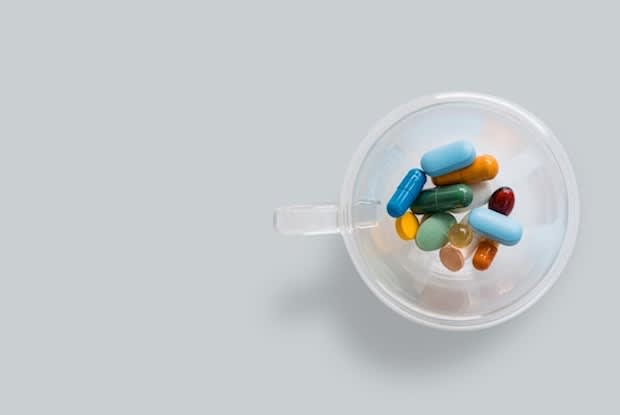Table of Contents
a. Bactericidal or Bacteriostatic Antibiotics
b. Broad-Spectrum or Narrow-Spectrum Antibiotics
What Are Antibiotics?
The first antibiotic medication to be discovered was penicillin in 1928. Since then, they have become widely used to treat a range of conditions. Four in five adults in the United States have taken an antibiotic medication at least once. [1] These days, the most common antibiotics include Augmentin (amoxicillin/clavulanate), Flagyl (metronidazole), and Amoxil (amoxicillin). [2]If your doctor has written you a prescription for antibiotics you can order them online through RxConnected to save money.
Antibiotics are prescribed to treat bacterial infections. Antibiotics that are taken orally enter the digestive tractive and are absorbed into the bloodstream. This then allows the drug to travel through the bloodstream to treat conditions all around the body. For some severe conditions, antibiotics may be injected directly into the desired area. [3] Common conditions that are treated with antibiotics include acne, conjunctivitis, bronchitis, middle-ear infections, and sexually transmitted diseases. [2]
Infections may be caused by a number of substances, including bacteria, viruses, fungus, and parasites. Antibiotics should only be taken to treat infections that are caused by bacteria. These medications are ineffective against other infections, including influenza (viral infection), thrush (fungal infection), and lice (a parasitic infection).
It is important that antibiotics are not taken unnecessarily. Often, mild infections will improve and clear without the use of medications. The overuse of antibiotic medications can result in antibiotic resistance. When bacteria become resistant to bacteria, it becomes more difficult to treat. This can result in longer and more severe infections. Continue reading to learn more about the different types of antibiotics.
Get savings updates for Augmentin
Classifying Antibiotics
a. Bactericidal or Bacteriostatic Antibiotics
Antibiotics treat bacterial infections in different ways.
Bactericidal medications destroy and kill bacterial cells completely. Many antibiotics, such as penicillins, kill bacteria by destroying the wall of the bacteria cells. When bacteria cells divide rapidly, small holes appear in the structure of the cells. These holes are filled by a component called peptidoglycans. Penicillins block peptidoglycans from linking together and prevent them from filling these holes. This allows the surrounding fluid to rush into the cells, causing them to burst. [4] Other bactericidal antibiotics kill cells by interfering with the contents of the cell.
Bacteriostatic antibiotics work by preventing bacteria from growing and dividing. This allows the body’s immune system to then clear the infection. During an infection, bacteria grow and divides so rapidly that the immune system can not control it. Bacteriostatic antibiotics stop the bacteria from functioning and producing new proteins. The bacteria cells still have enough proteins to survive but can no longer produce more cells. The body’s immune system can then remove the bacteria. [5] Broad-spectrum antibiotics treat a wide range of bacterial infections. Most bacteria can be categorized as either gram-positive or gram-negative. Gram-positive bacteria have a thick cell wall with several layers of peptidoglycans. However, gram-negative bacteria only have a thin layer of peptidoglycans but also have an outer membrane with other molecules. [6] Broad-spectrum drugs are effective at treating infections with both gram-positive and gram-negative bacteria. [7] Narrow-spectrum antibiotics are very effective at treating specific types of bacterial infections. However, they may be ineffective against other bacteria. There are many reasons for this. Some antibiotic molecules may be too large to penetrate the layers of some bacteria. Other antibiotics may target specific molecules that are only found in certain bacteria. [5] Often, narrow-spectrum antibiotics are only effective against either gram-positive or gram-negative bacteria. Penicillins are also known as beta-lactam antibiotics. These medications are mainly effective against gram-positive bacterial organisms, although may be used for some gram-negative infections. [7] Common penicillin antibiotics include amoxicillin and penicillin itself. Penicillin antibiotics may be either natural or semisynthetic. They are commonly used to treat chest infections, skin infections, and urinary tract infections. Tetracyclines are a broad-spectrum bacteriostatic antibiotic. They are effective against a very wide variety of infections. They are typically prescribed to treat skin infections, such as acne and rosacea Tetracyclines are also commonly used for sexually transmitted diseases and respiratory infections. [8] Tetracyclines such as doxycycline work by preventing bacteria from producing proteins. [9] Macrolides are a type of broad-spectrum bacteriostatic antibiotic used to treat common infections. Macrolides such as clarithromycin are commonly used as an alternative to penicillin antibiotics. They are a useful alternative to treat penicillin-resistant bacteria or for patients with penicillin allergies. [10] Cephalosporins are broad-spectrum bacteriostatic antibiotics that are used to treat many bacterial infections. Cephalosporins such as cephalexin may be prescribed to treat serious illnesses such as septicemia or meningitis. [10] Aminoglycosides are often used to treat severe illnesses. These antibiotics are typically given via an injection. Aminoglycosides may cause serious side effects and are usually administered within a hospital setting. [11] Fluoroquinolones are a broad-spectrum antibiotic. Medications such as ciprofloxacin can be used to treat many bacterial infections, especially urinary tract and respiratory infections. However, fluoroquinolones are not used as frequently as other antibiotics as they have a higher risk of side effects. The content in this article is intended for informational purposes only. This website does not provide medical advice. In all circumstances, you should always seek the advice of your physician and/or other qualified health professionals(s) for drug, medical condition, or treatment advice. The content provided on this website is not a substitute for professional medical advice, diagnosis or treatment.
b. Broad-Spectrum or Narrow-Spectrum Antibiotics
Types of Antibiotics
a. Penicillins
b. Tetracyclines
c. Macrolides

d. Cephalosporins
e. Aminoglycosides
f. Fluoroquinolones

